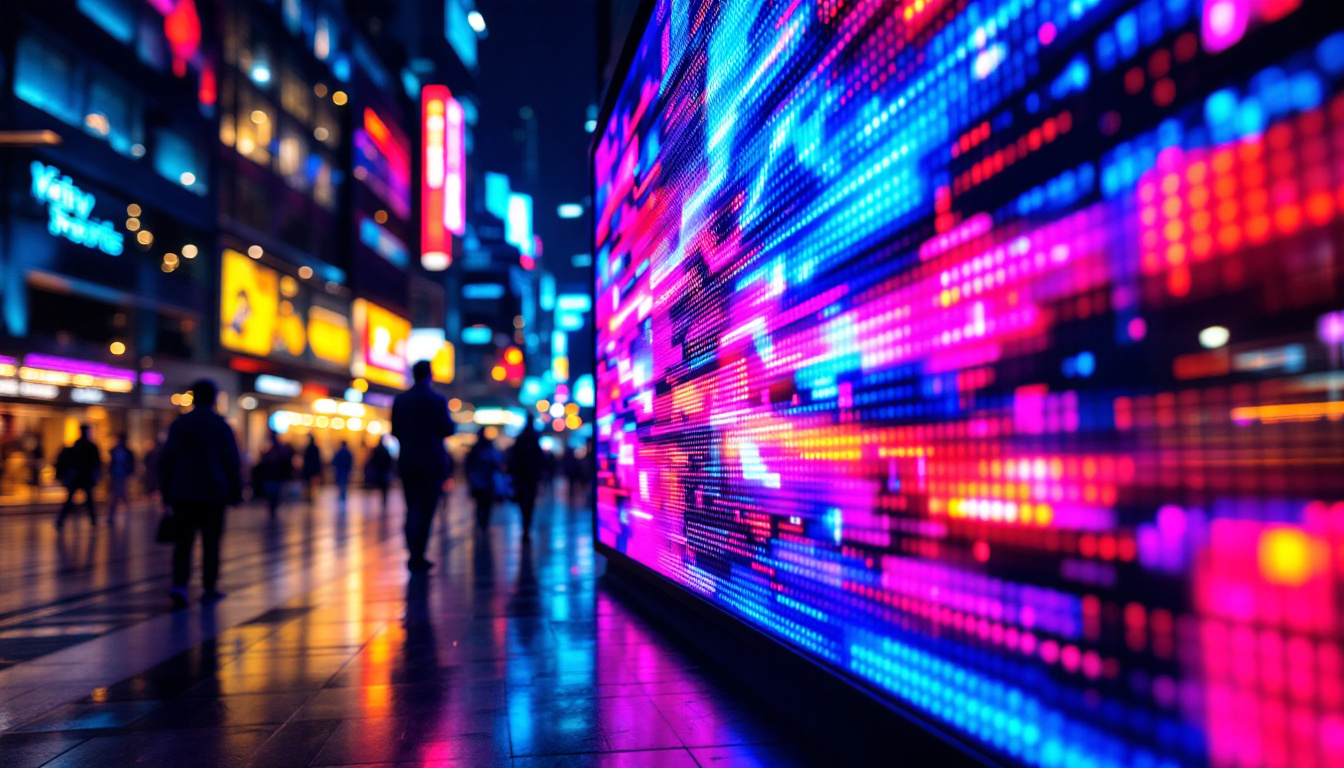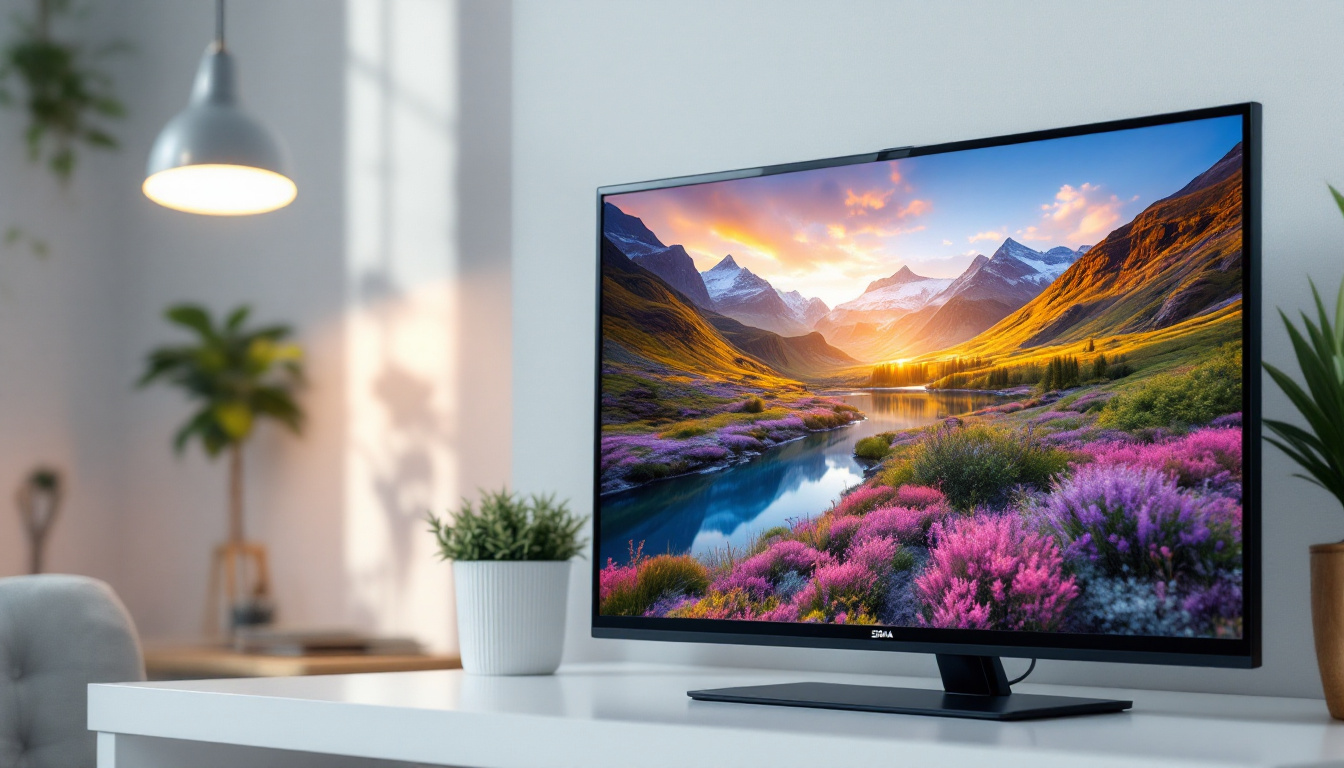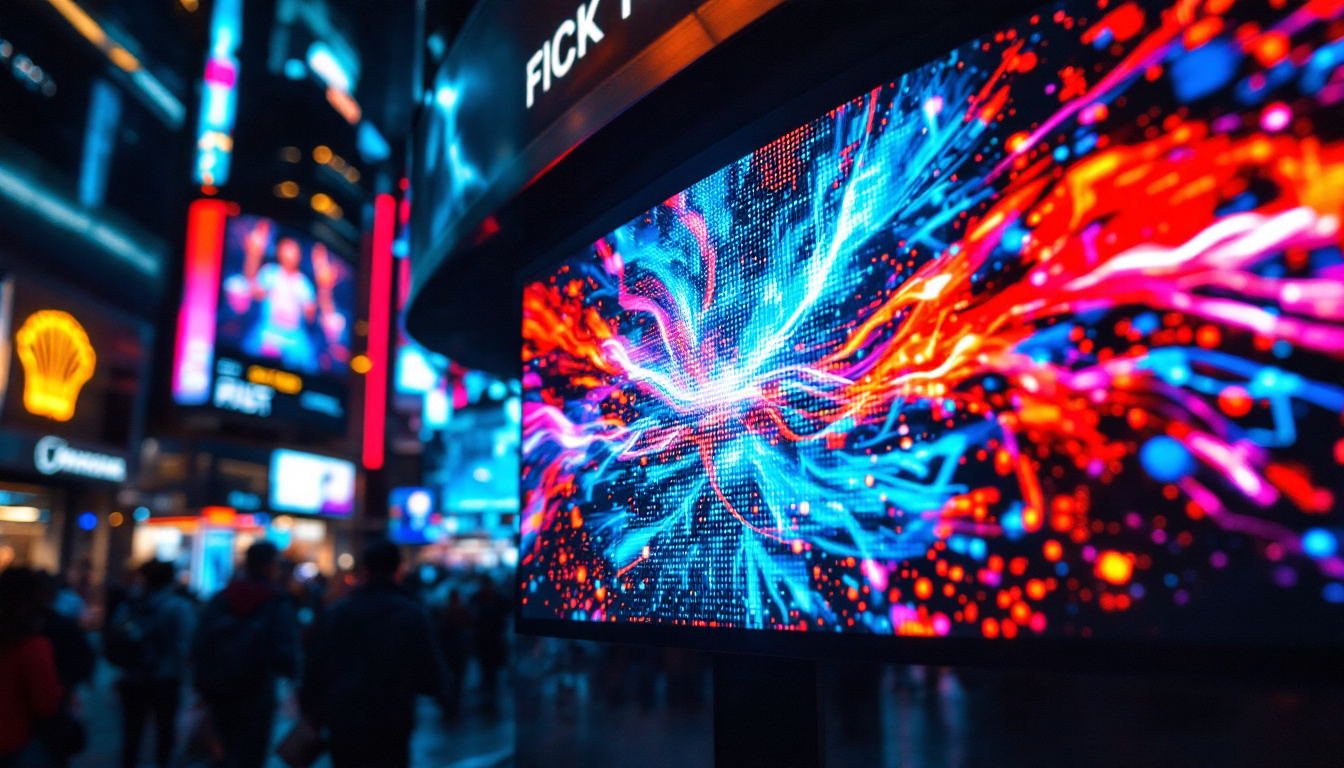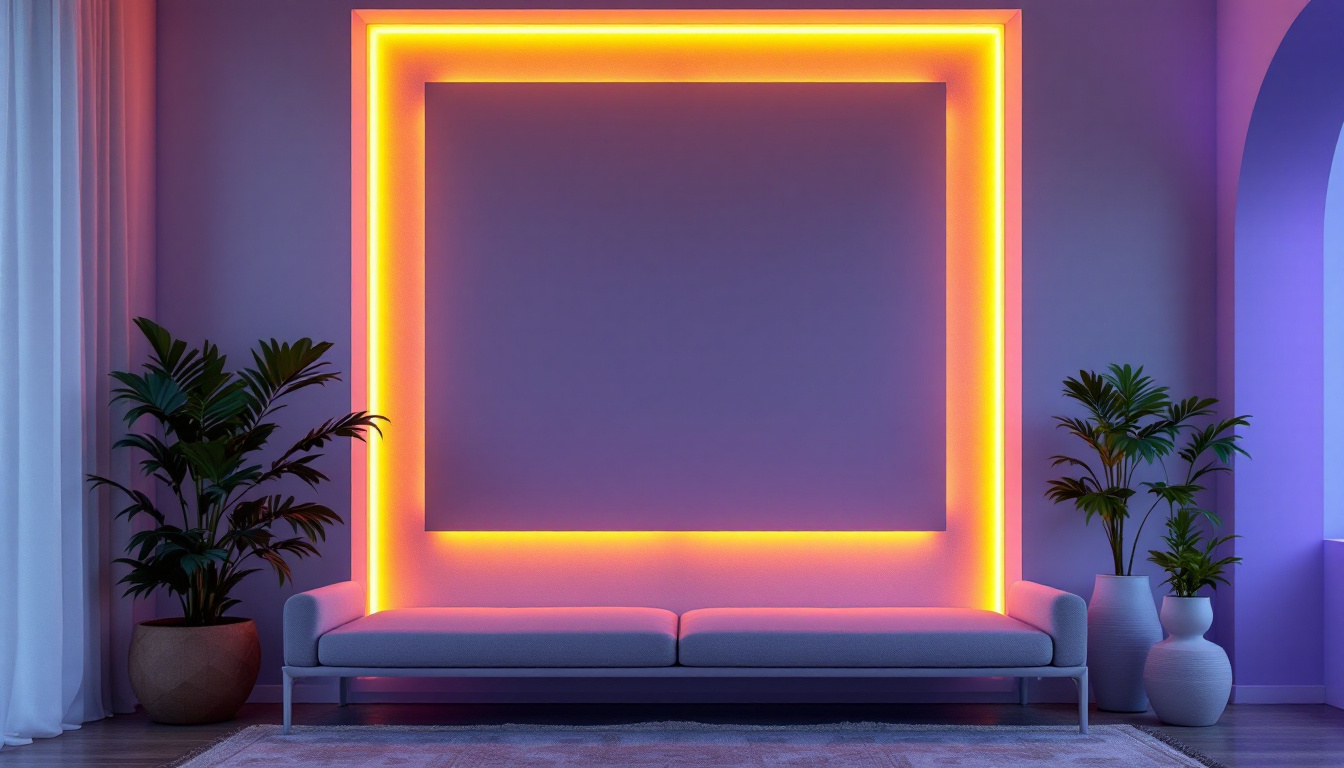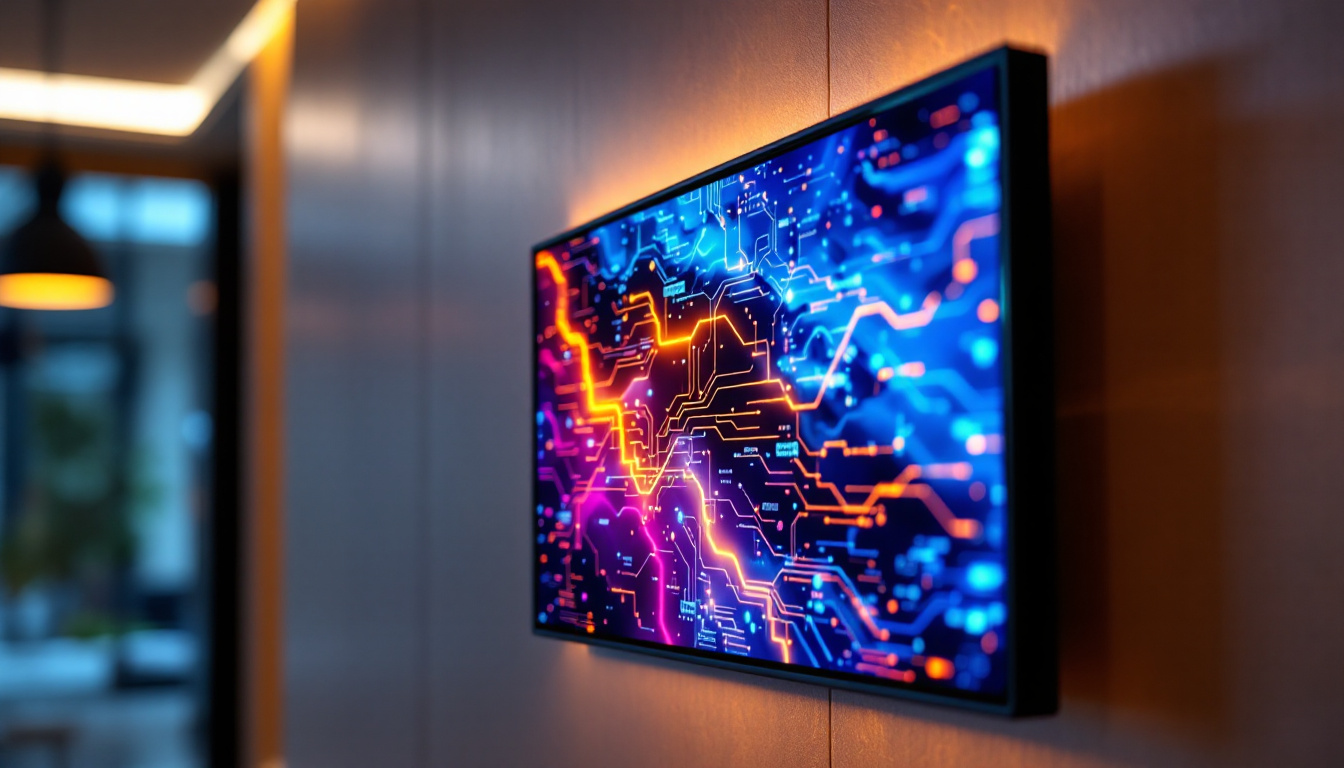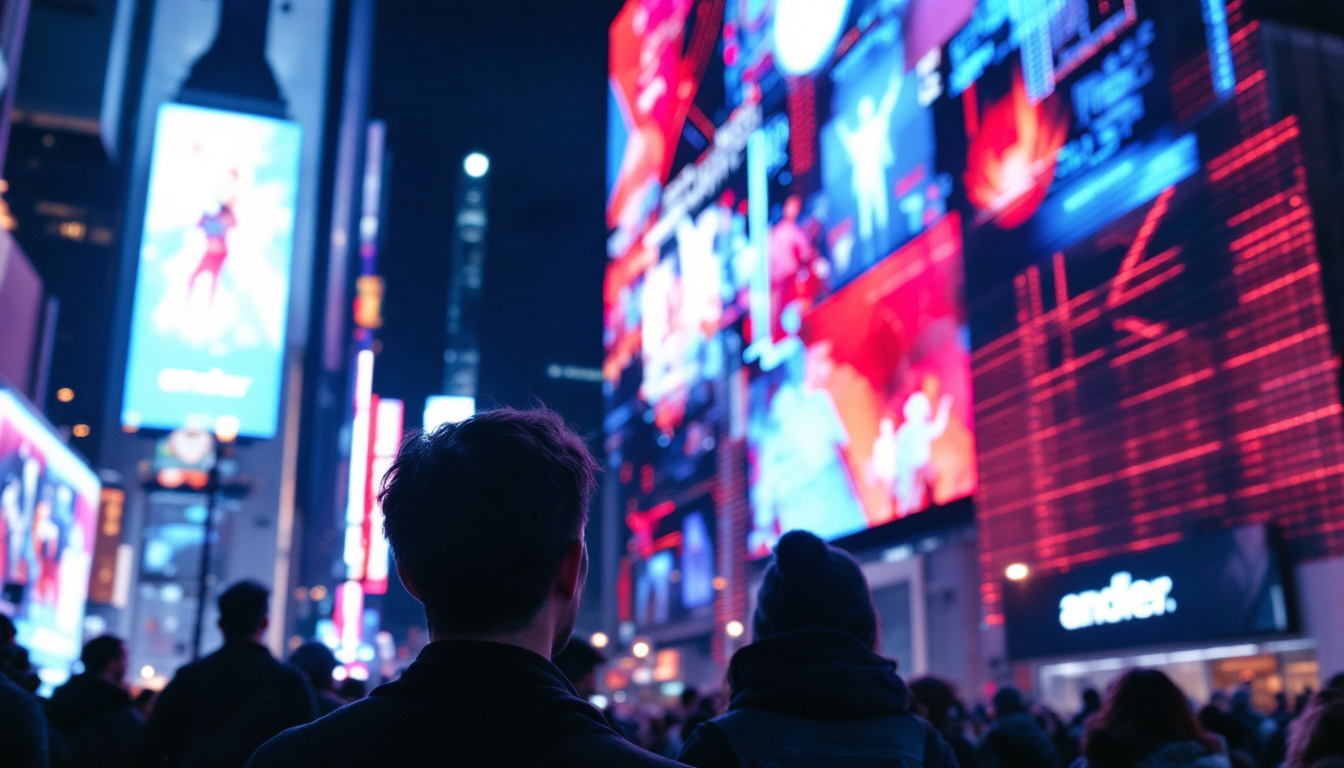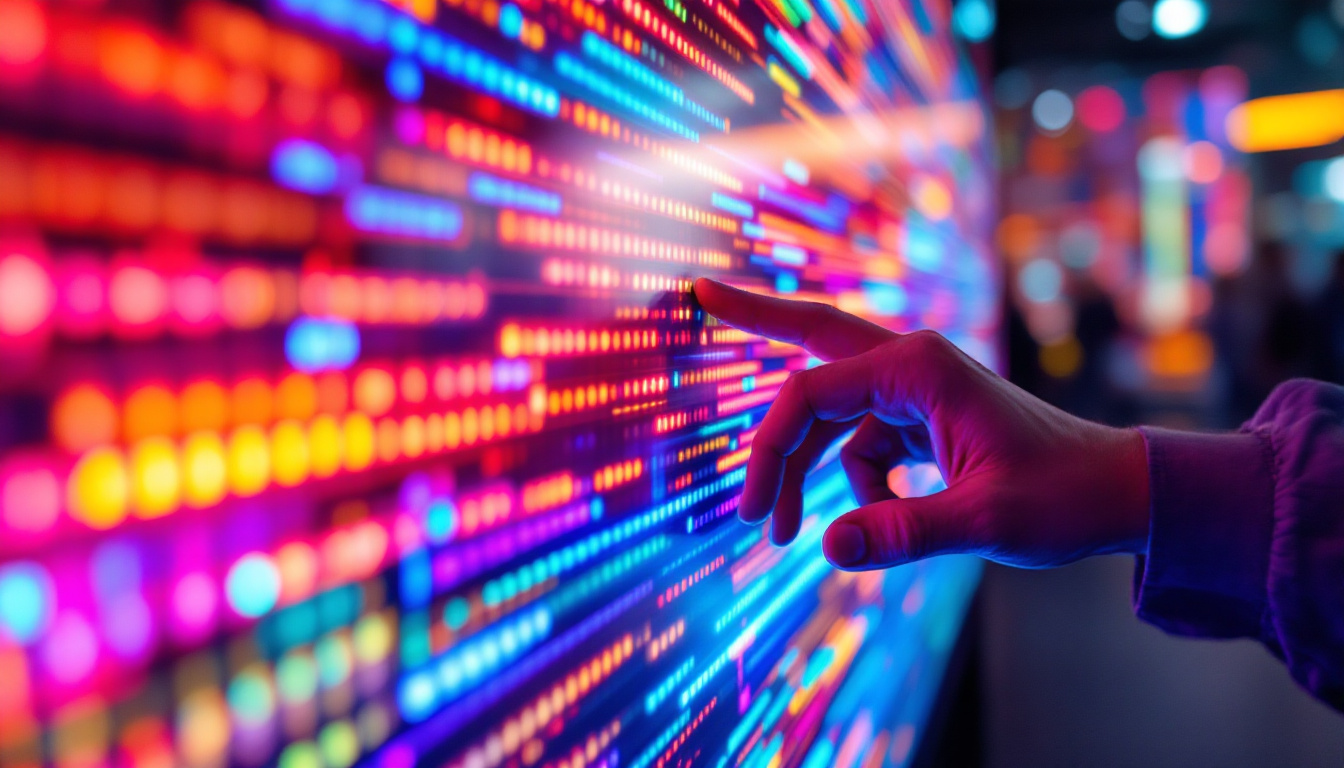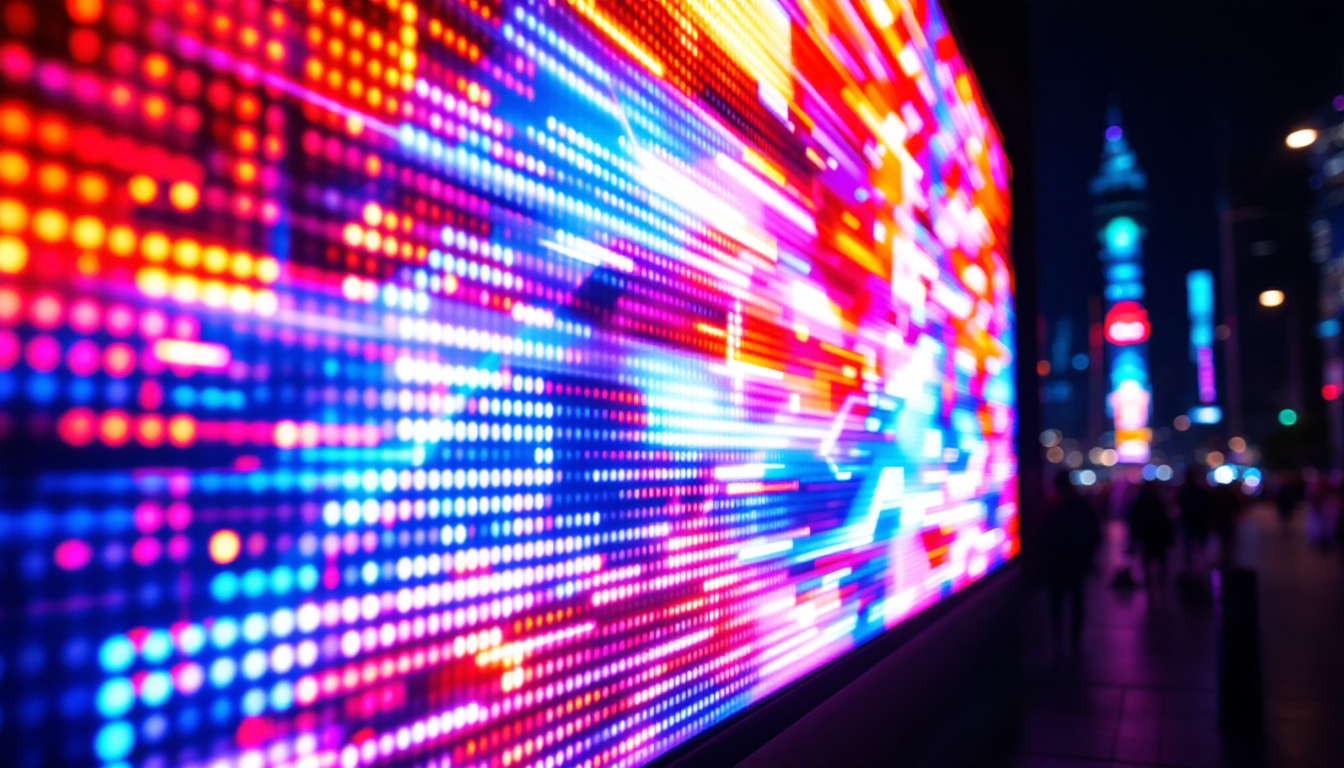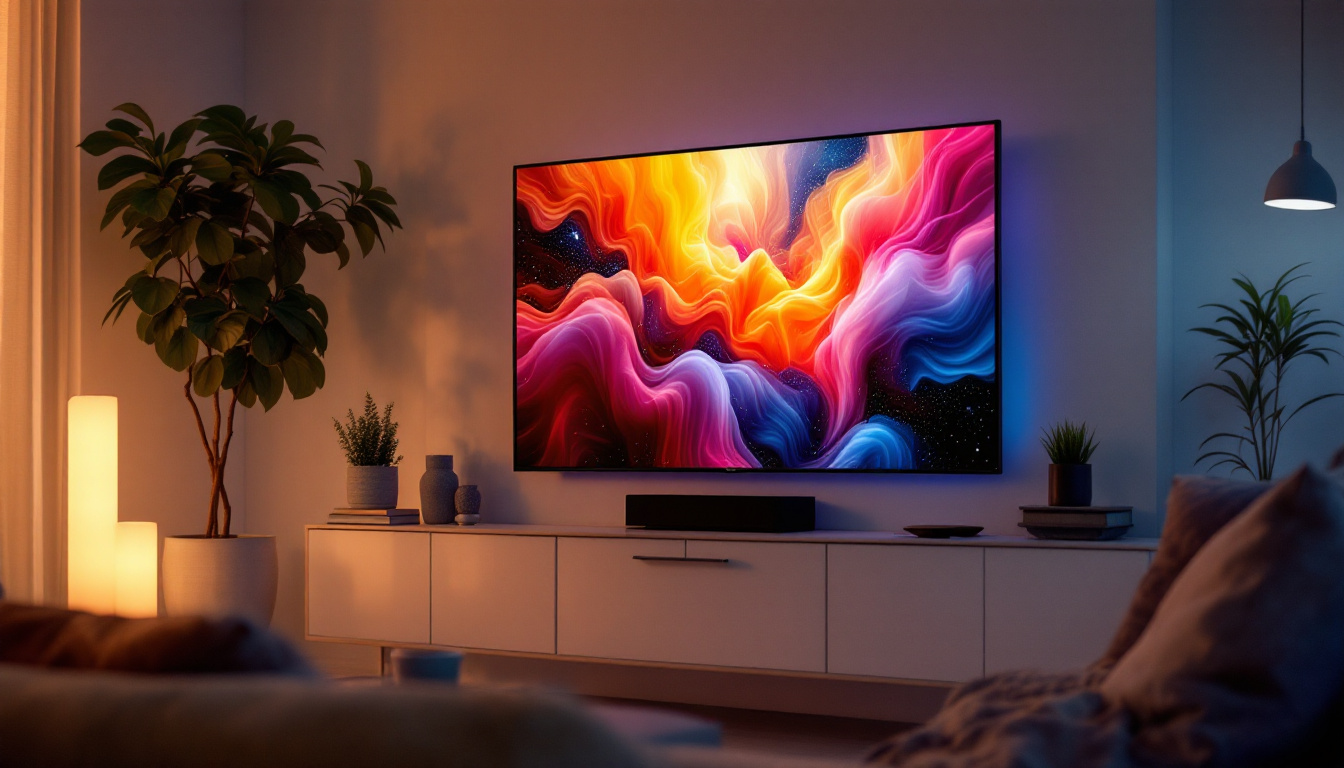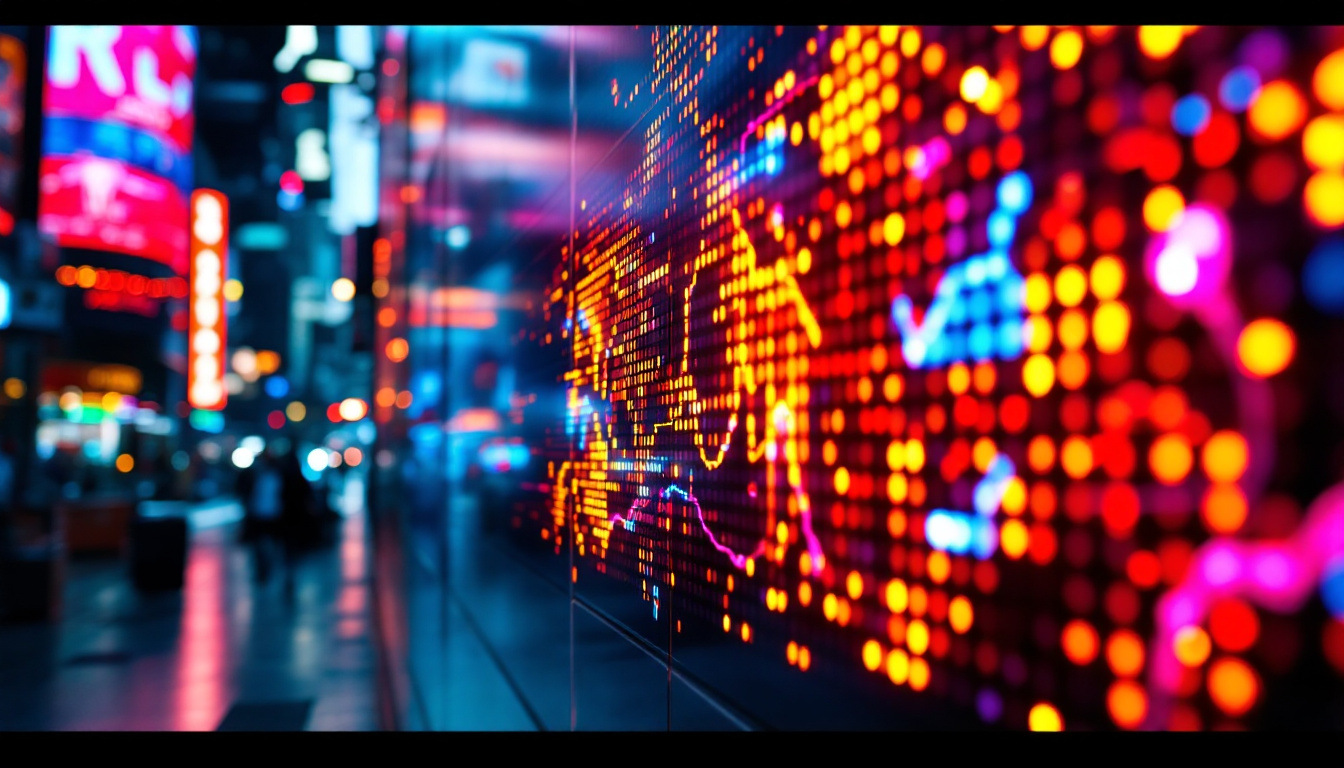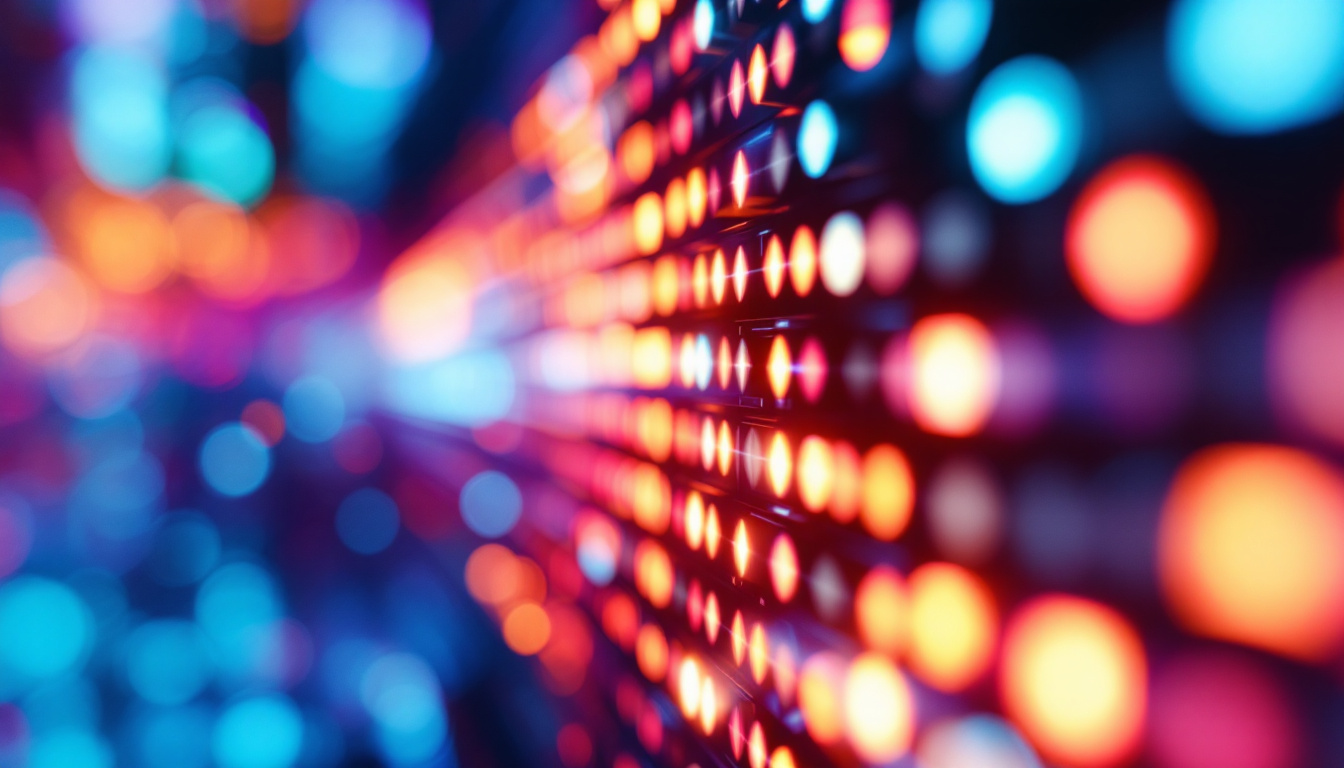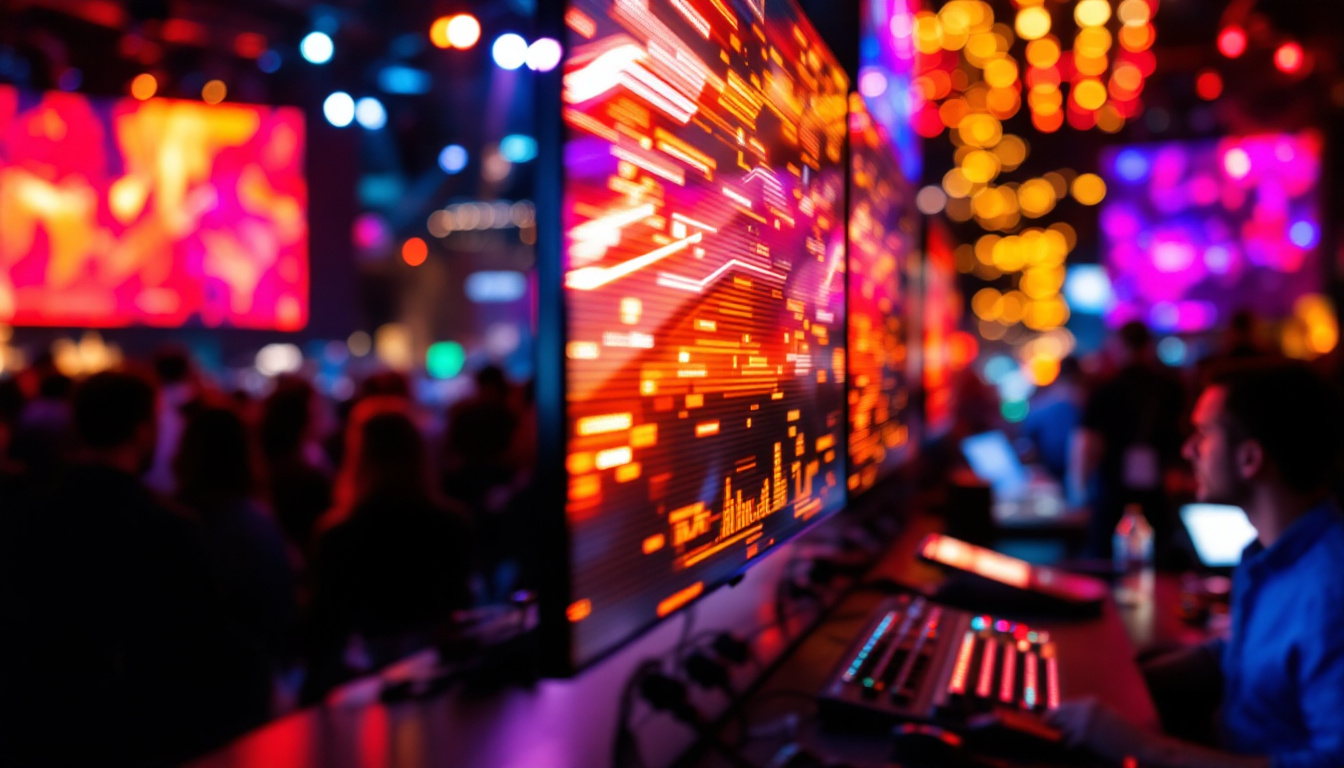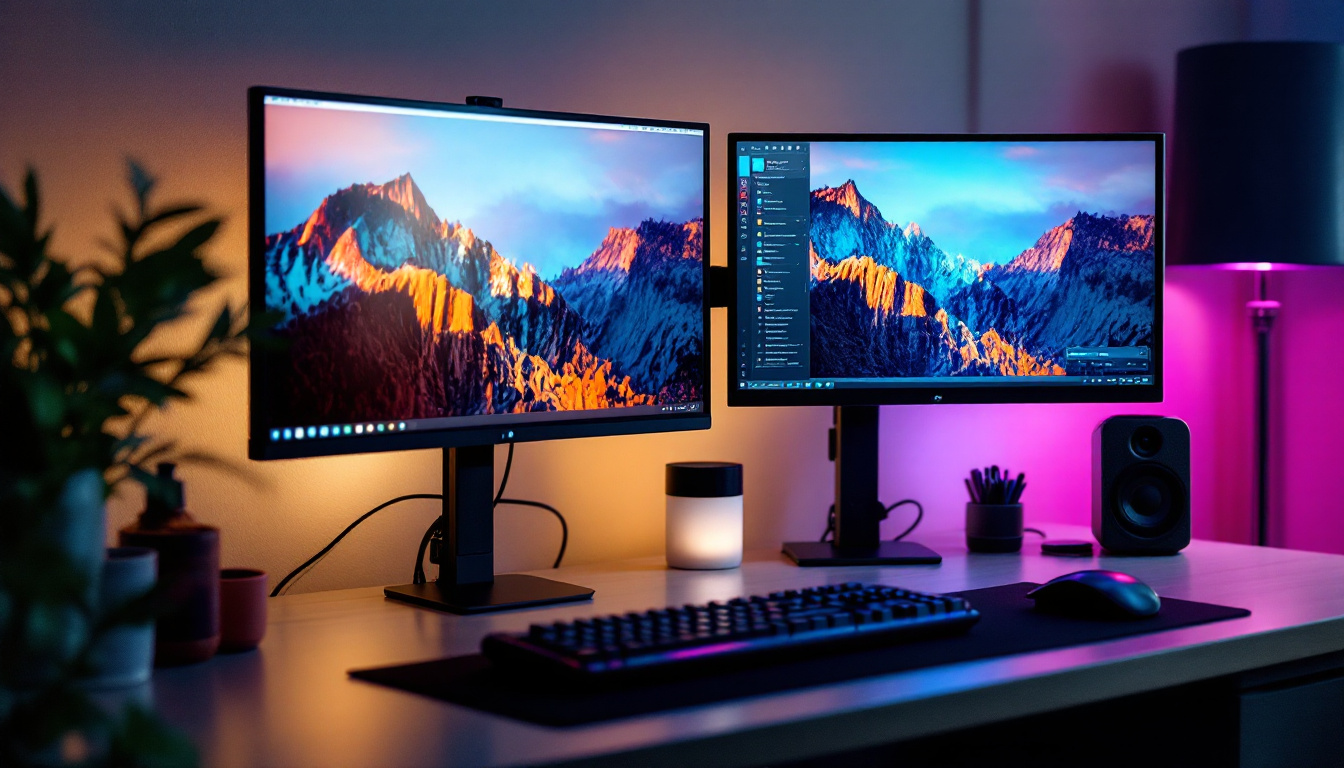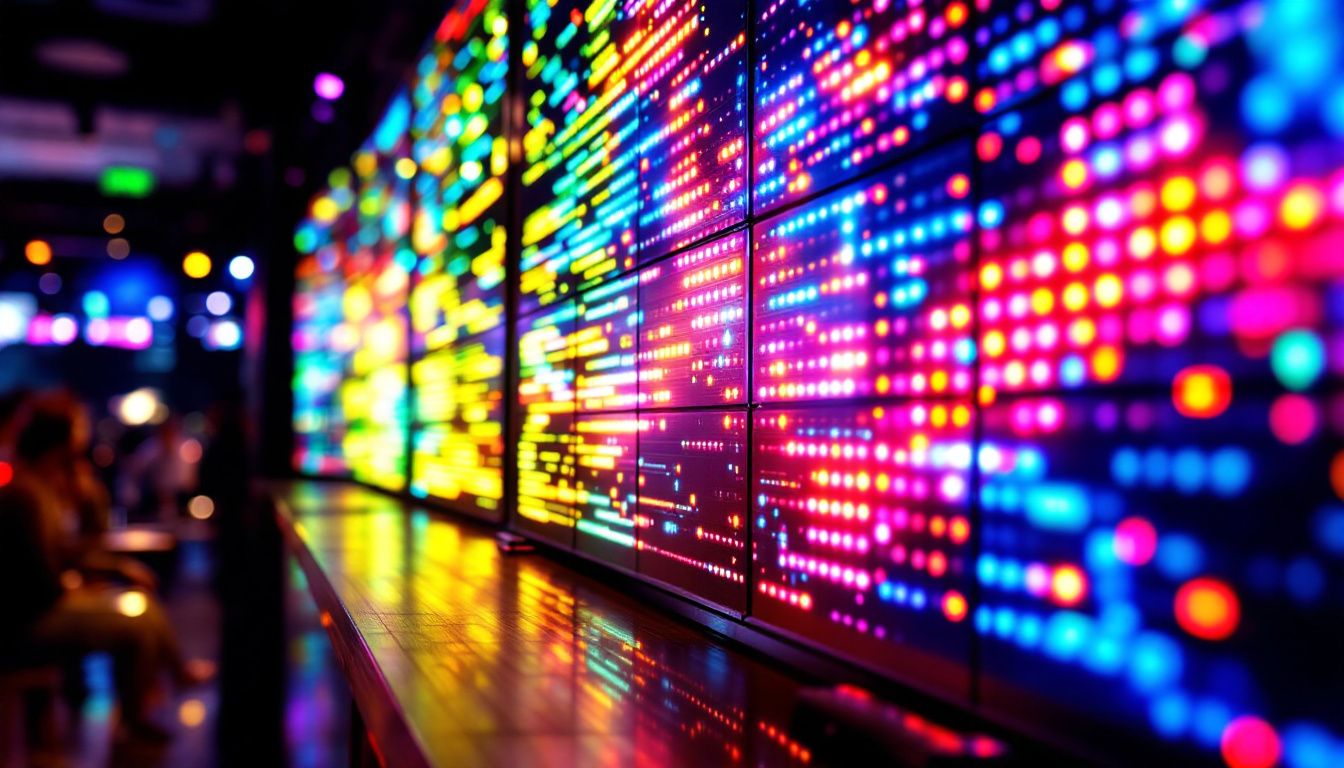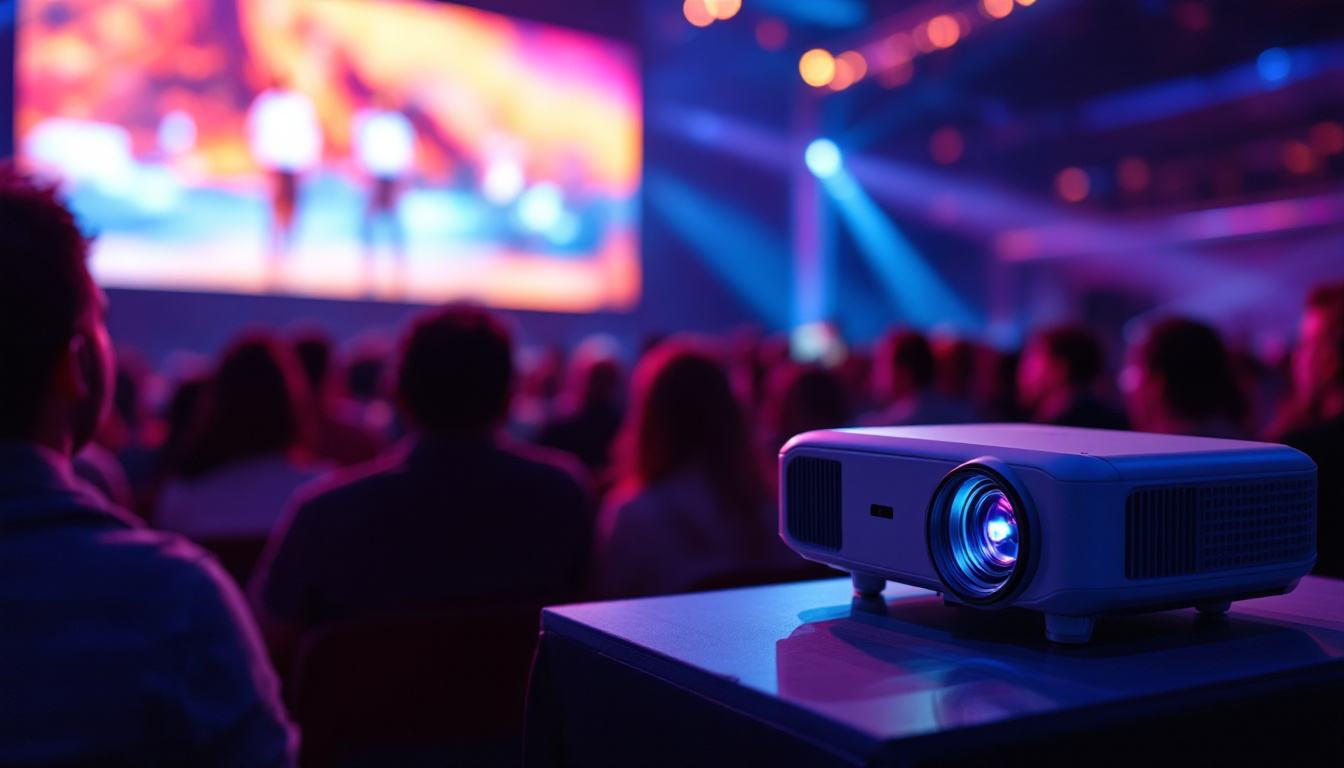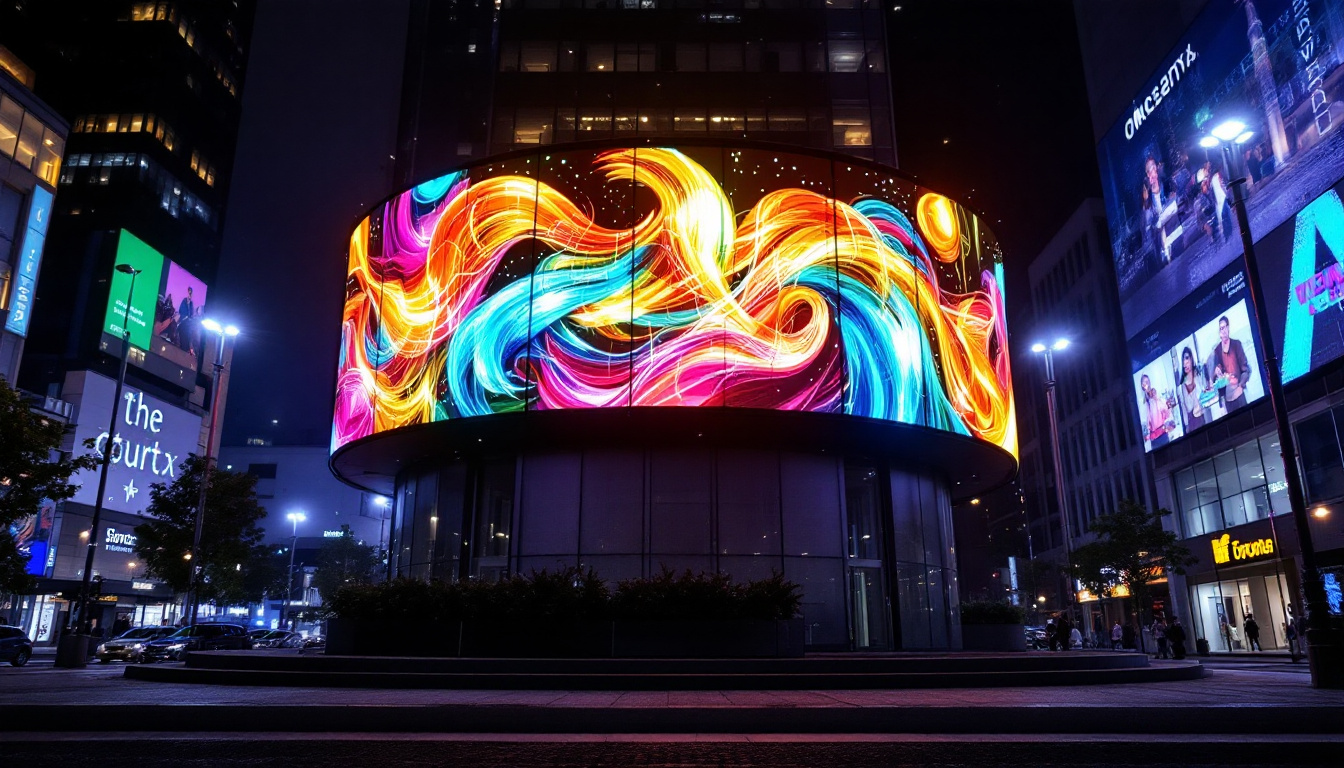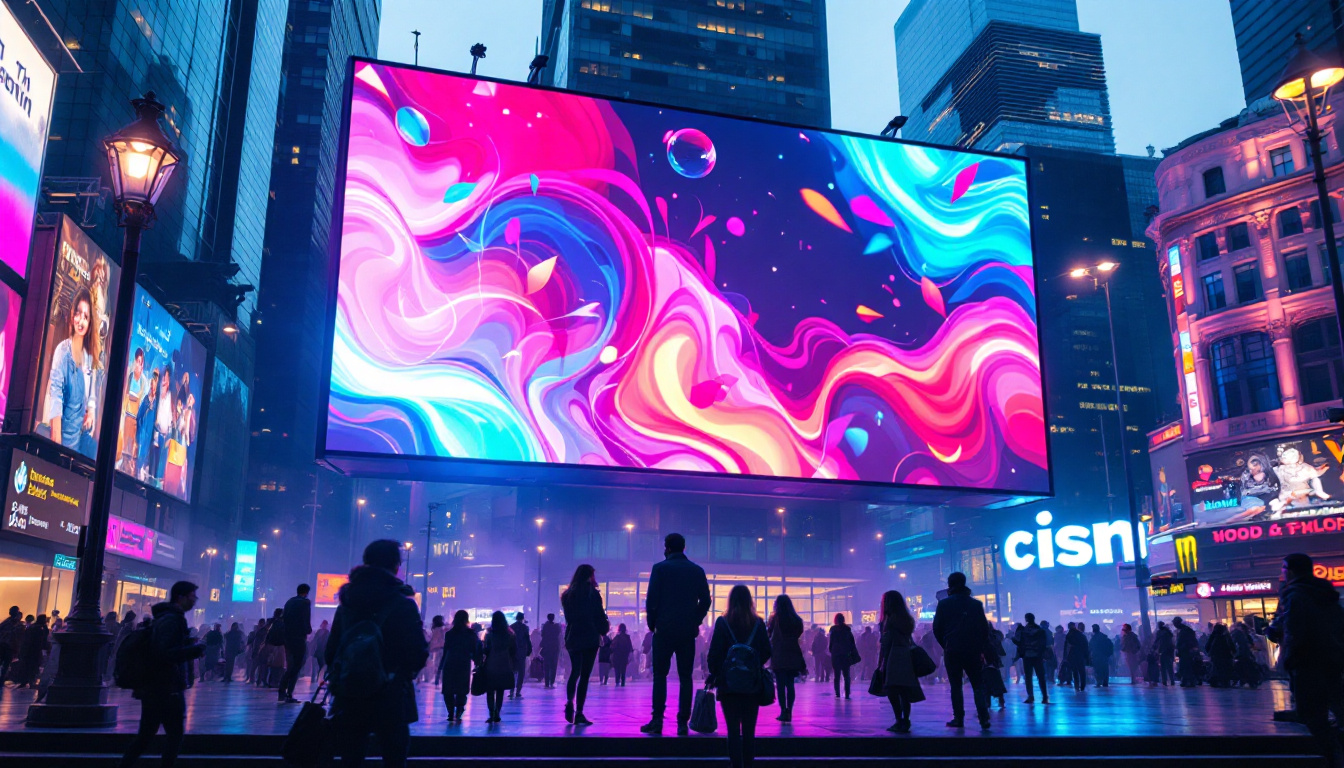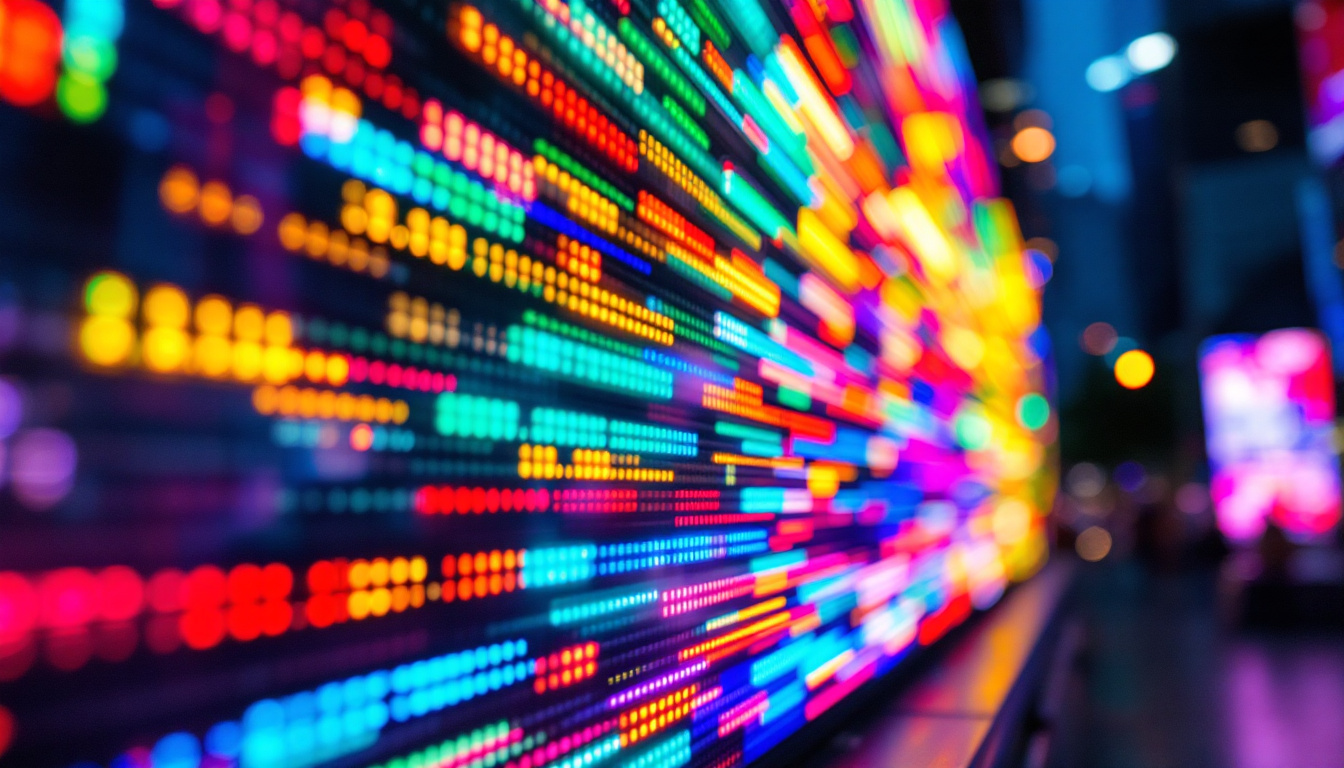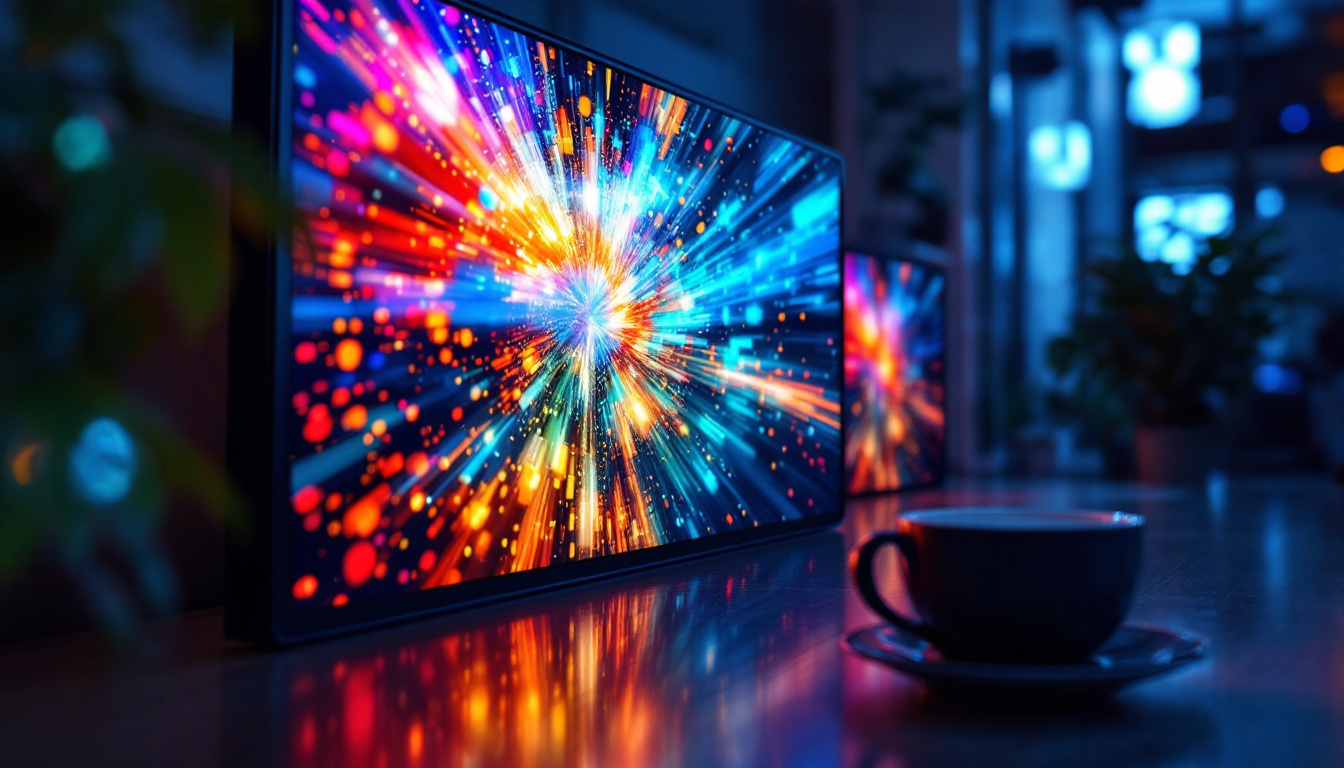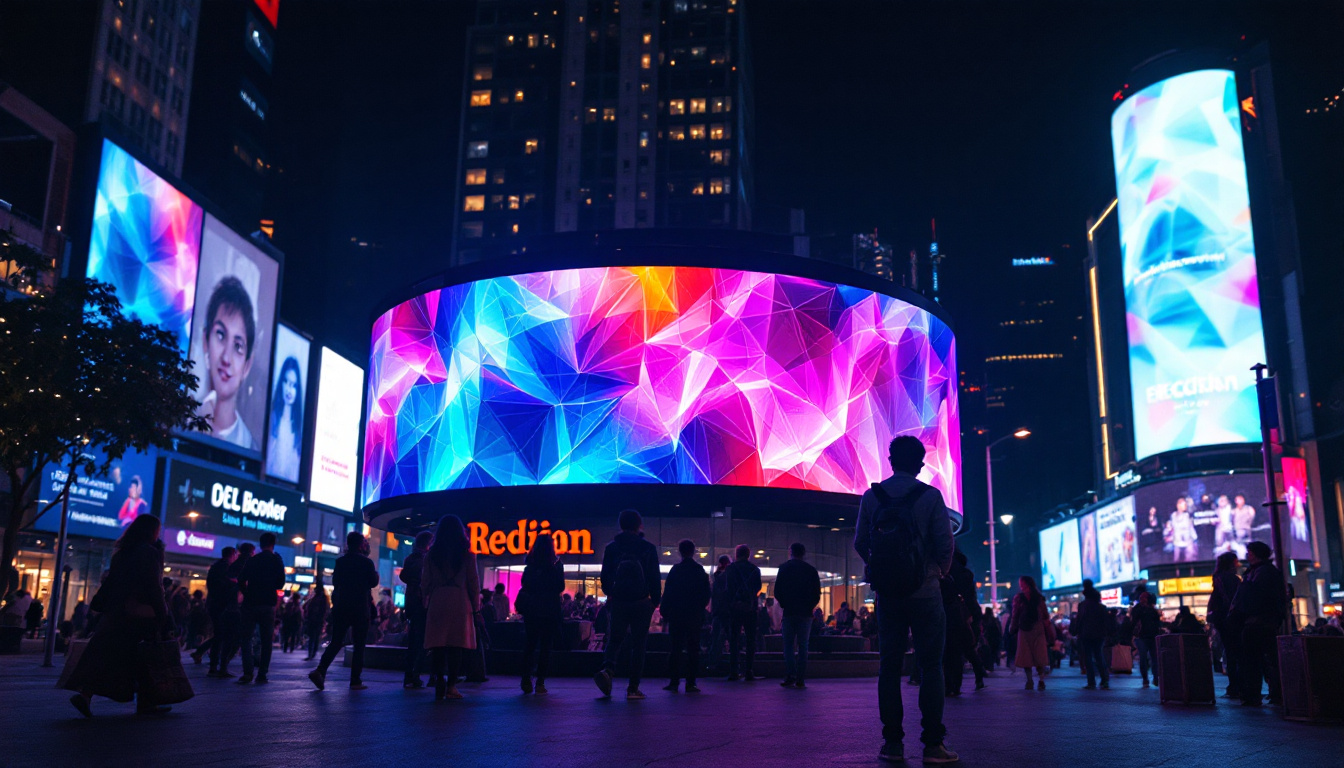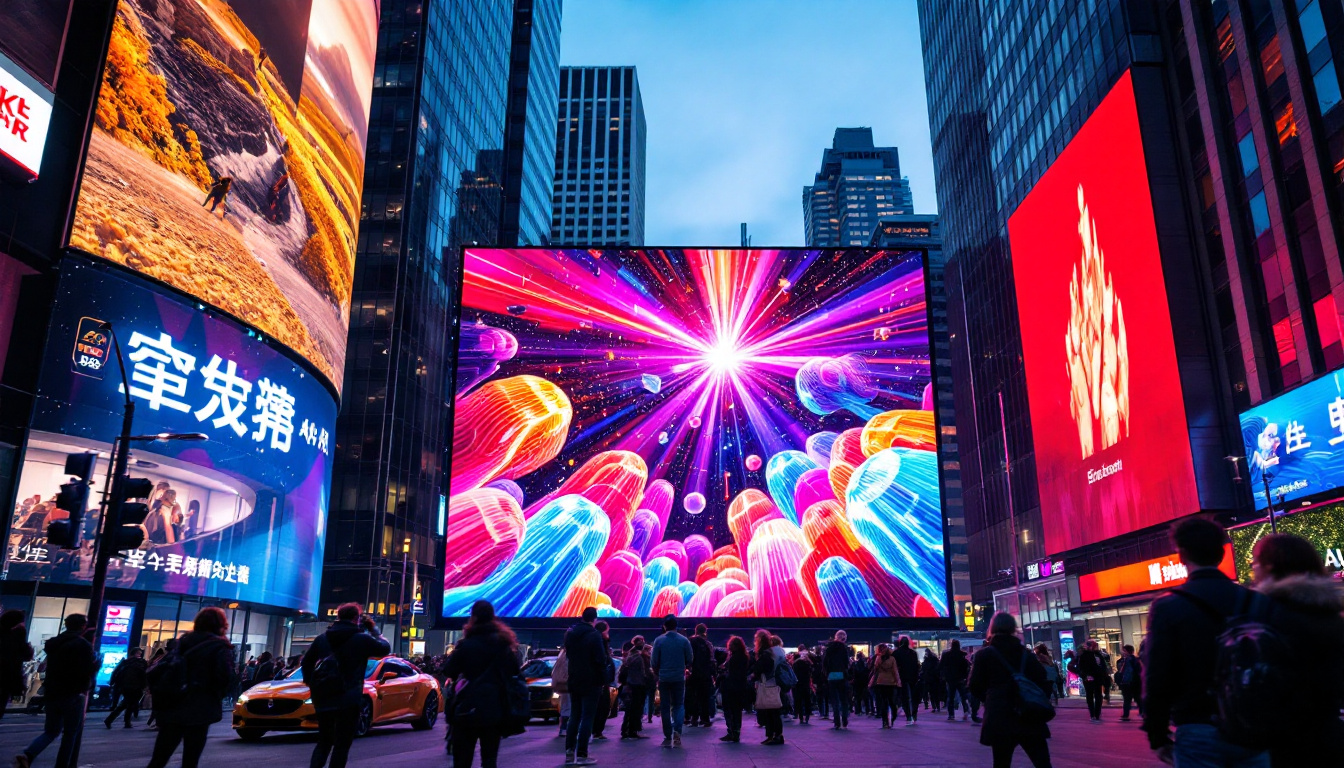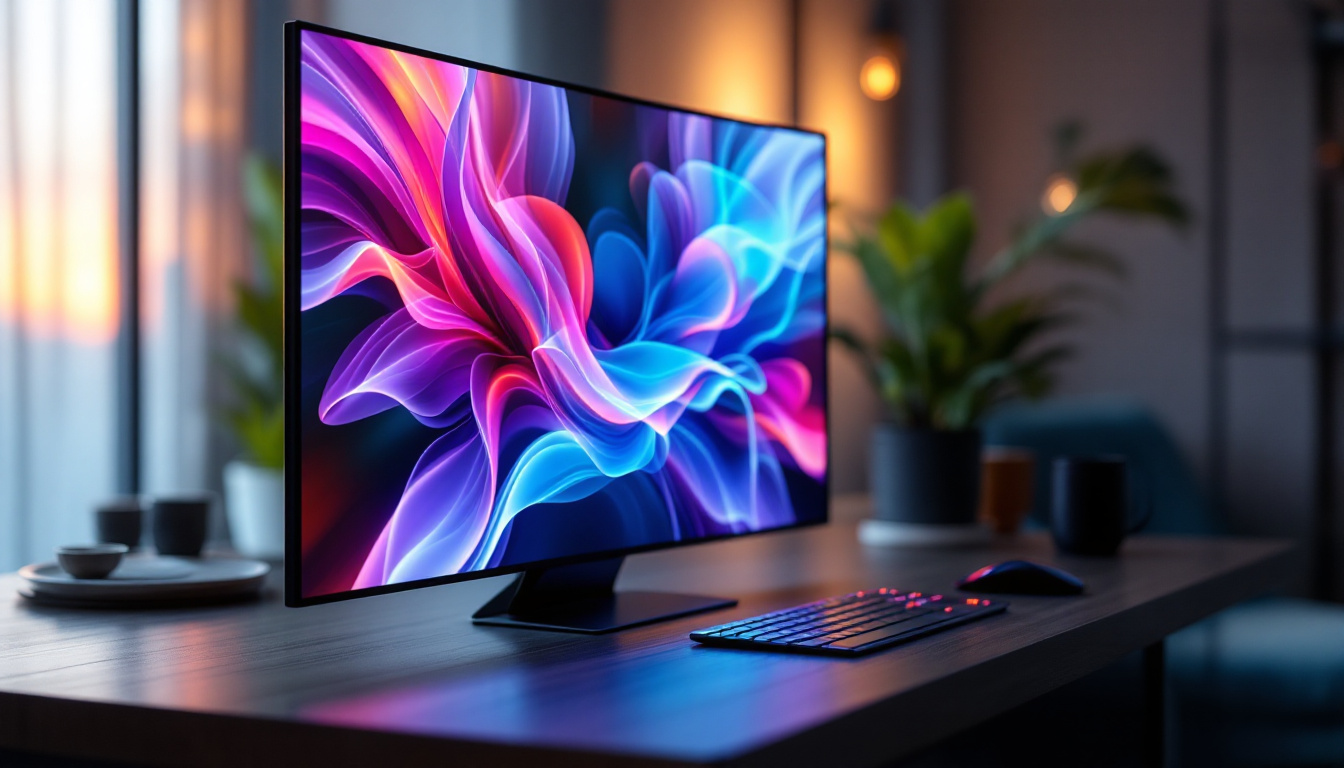In the modern world, visual communication has evolved significantly, and LED displays have become a cornerstone of this transformation. From billboards to television screens, LED technology has established itself as a dominant force in the realm of visual media. This article delves into the intricacies of LED displays, exploring their technology, applications, and advantages.
Understanding LED Technology
Light Emitting Diodes (LEDs) are semiconductor devices that emit light when an electric current passes through them. This technology has revolutionized the way we perceive light and color in various applications, particularly in display technology. Unlike traditional incandescent bulbs, LEDs are more energy-efficient, have a longer lifespan, and offer a wider range of colors. The versatility of LEDs has enabled their integration into countless devices, from everyday household items to sophisticated industrial machinery, showcasing their adaptability and importance in modern technology.
The Basics of LED Operation
At its core, an LED operates on a simple principle: when electrons move through a semiconductor material, they release energy in the form of photons, which is visible light. The color of the light emitted depends on the materials used in the semiconductor. By combining different colors, such as red, green, and blue (RGB), a full spectrum of colors can be produced, allowing for vibrant and dynamic displays. This principle of color mixing is not only fundamental to LED technology but also underpins many digital imaging and lighting applications, enabling everything from television screens to stage lighting to create stunning visual effects.
Types of LED Displays
LED displays come in various forms, each suited for different applications. The most common types include:
- Direct View LED Displays: These displays consist of individual LEDs arranged in a grid, allowing for high brightness and excellent visibility, even in direct sunlight.
- LED Video Walls: Composed of multiple LED panels, video walls are used for large-scale displays in venues such as stadiums and concert halls.
- OLED Displays: Organic LEDs offer superior contrast and color accuracy, making them popular in high-end televisions and smartphones.
Advantages of LED Displays
LED displays offer numerous advantages over traditional display technologies. Their energy efficiency is one of the most significant benefits, as they consume less power while providing higher brightness levels. Additionally, the long lifespan of LEDs reduces maintenance costs and the frequency of replacements. Furthermore, LED technology is also known for its rapid response time, which allows for smoother motion and less blur in fast-moving images, making them ideal for sports broadcasts and action films. The compact size of LEDs also enables innovative designs, allowing for thinner and lighter displays that can fit into a variety of spaces, from sleek smartphones to expansive outdoor billboards.
Moreover, the environmental impact of LED technology is noteworthy. Unlike traditional lighting options, LEDs do not contain hazardous materials like mercury, making them a safer choice for both consumers and the environment. The reduced energy consumption associated with LEDs also contributes to lower greenhouse gas emissions, aligning with global efforts to combat climate change. As technology continues to evolve, the potential for LED applications expands, paving the way for even more sustainable and efficient lighting solutions in the future.
Applications of LED Displays
LED technology is versatile and finds applications across various industries. From advertising to entertainment, the uses of LED displays are vast and varied.
Advertising and Marketing
One of the most prominent applications of LED displays is in advertising. Digital billboards and signage have become ubiquitous in urban environments, capturing the attention of passersby with dynamic content. The ability to change messages quickly and remotely allows businesses to engage with their audience in real-time, making advertising more effective. Moreover, the integration of sensors and data analytics into LED displays enables targeted advertising based on demographics, time of day, and even weather conditions, further enhancing the relevance of the content being shown.
Entertainment and Events
In the entertainment industry, LED displays play a crucial role in enhancing the viewer experience. Concerts, festivals, and sporting events utilize large LED screens to display live feeds, graphics, and animations, creating an immersive atmosphere for attendees. The high resolution and brightness of LED technology ensure that visuals are captivating, even from a distance. Additionally, advancements in LED technology have led to flexible and transparent displays, allowing for innovative stage designs and interactive installations that engage audiences on multiple levels. These displays can be synchronized with sound and lighting, creating a holistic sensory experience that leaves a lasting impression.
Public Information Displays
LED displays are also used for public information systems, such as transportation schedules, weather updates, and emergency alerts. These displays provide real-time information to the public, enhancing communication and safety in urban environments. Their visibility and clarity make them ideal for conveying important messages quickly and effectively. Beyond traditional applications, LED technology is being utilized in smart city initiatives, where interconnected displays can share information across various platforms, improving traffic management and public safety. For instance, LED screens can adapt to changing traffic conditions, providing timely updates to drivers and pedestrians alike, thereby contributing to a more efficient urban infrastructure.
Technical Aspects of LED Displays
Understanding the technical aspects of LED displays is essential for appreciating their capabilities and performance. Several factors contribute to the quality and effectiveness of an LED display.
Pixel Pitch
Pixel pitch refers to the distance between the centers of two adjacent pixels on an LED display. A smaller pixel pitch results in higher resolution and better image quality, making it suitable for close viewing distances. Conversely, a larger pixel pitch can be used for displays viewed from a distance, where fine details are less critical. For instance, a pixel pitch of 1.5mm is ideal for indoor environments like control rooms or retail spaces, where viewers are often just a few feet away. In contrast, a pixel pitch of 10mm or more may be more appropriate for large outdoor billboards, where viewers are typically several meters away, allowing for a more economical use of pixels without sacrificing visual impact.
Brightness and Contrast Ratio
Brightness is measured in nits, and it determines how visible an LED display is in various lighting conditions. A higher brightness level is essential for outdoor displays, where sunlight can wash out images. The contrast ratio, on the other hand, measures the difference between the brightest and darkest parts of the image. A higher contrast ratio enhances the overall image quality, making colors more vibrant and details more pronounced. For example, an LED display with a brightness of 5000 nits and a contrast ratio of 4000:1 can deliver stunning visuals even in bright daylight, making it a popular choice for advertising and public information displays. Additionally, advancements in technology have led to the development of high dynamic range (HDR) capabilities, allowing displays to produce a wider range of colors and luminance levels, further enhancing the viewing experience.
Refresh Rate
The refresh rate of an LED display indicates how many times the image is refreshed per second. A higher refresh rate reduces motion blur and flicker, making it particularly important for video content. Displays with a refresh rate of 60 Hz or higher are generally preferred for applications involving fast-moving visuals. In the realm of gaming and high-definition video, refresh rates of 120 Hz or even 240 Hz are becoming increasingly common, providing smoother motion and a more immersive experience. Furthermore, technologies such as variable refresh rate (VRR) are being integrated into LED displays, allowing the refresh rate to adapt dynamically to the frame rate of the content being displayed. This not only enhances the visual quality but also reduces screen tearing and stuttering, making it a game-changer for both gamers and filmmakers alike.
Installation and Maintenance
Proper installation and maintenance are crucial for ensuring the longevity and performance of LED displays. Understanding the requirements for both can help maximize the benefits of this technology.
Installation Considerations
When installing an LED display, several factors must be considered, including location, mounting structure, and power supply. The display should be positioned for optimal visibility, taking into account the viewing angles and distance from the audience. Additionally, a robust mounting structure is essential to ensure stability and safety, particularly for large displays.
Maintenance Practices
Regular maintenance is vital for keeping LED displays in top condition. This includes cleaning the display surface to remove dust and debris, checking connections and power supplies, and monitoring performance for any signs of malfunction. Implementing a routine maintenance schedule can help prevent issues and extend the lifespan of the display.
Future Trends in LED Display Technology
The LED display industry is constantly evolving, with new technologies and innovations emerging regularly. Understanding these trends can provide insights into the future of visual communication.
Advancements in MicroLED Technology
MicroLED technology is gaining traction as a potential game-changer in the display market. These tiny LEDs can be used to create displays with exceptional resolution and color accuracy. Unlike traditional LED displays, MicroLEDs do not require a backlight, resulting in thinner and lighter screens with improved energy efficiency.
Integration with Smart Technology
The integration of LED displays with smart technology is another trend that is reshaping the industry. Smart LED displays can connect to the internet, allowing for real-time content updates, remote management, and data analytics. This connectivity enhances the functionality of displays, making them more interactive and responsive to user needs.
Sustainability Initiatives
As environmental concerns continue to grow, the LED display industry is focusing on sustainability. Manufacturers are exploring eco-friendly materials and energy-efficient production processes to reduce the environmental impact of LED displays. Additionally, recycling programs for old displays are being implemented to promote responsible disposal and resource conservation.
Conclusion
LED displays have transformed the landscape of visual communication, offering unparalleled brightness, energy efficiency, and versatility. Their applications span various industries, from advertising to public information systems, making them an integral part of modern life. As technology continues to advance, the future of LED displays looks promising, with innovations that will further enhance their capabilities and sustainability.
Understanding the intricacies of LED displays equips businesses and consumers alike to make informed decisions about their visual communication needs. Whether for advertising, entertainment, or information dissemination, LED technology stands at the forefront of the visual revolution, illuminating the world in vibrant color and clarity.
Illuminate Your Space with LumenMatrix
Ready to elevate your visual communication with vibrant, energy-efficient LED displays? Discover LumenMatrix’s innovative solutions, from Indoor and Outdoor LED Wall Displays to specialized options like Vehicle LED Displays, LED Sports Displays, and even Custom LED solutions tailored to your unique needs. Embrace the future of digital signage with LumenMatrix and create unforgettable visual experiences that captivate your audience. Check out LumenMatrix LED Display Solutions today and transform your space with the power of LED technology.

